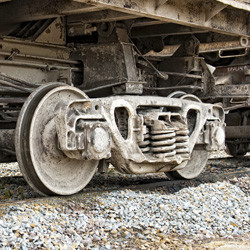Minimising axle failure in rail transport
A broken axle could lead to significant rail catastrophes, causing the loss of lives as well as major economic costs from compensation to repairs. Overall, the aim of the EU-funded project 'EURAXLES: Minimizing the risk of fatigue failure of railway axles' (EURAXLES)(opens in new window) was to reduce railway axle failure to the maximum extent possible. EURAXLES worked on novel axle design based on new materials and methods to help predict failure probability. It furthered axle protection against corrosion, developed better coatings and improved adhesion of coatings while keeping in mind environmental considerations. In addition, project members worked on assessing new and improved non-destructive testing inspection methods. Existing axle standards were assessed to determine restrictions for the testing and validation of protective coatings. Focus was also placed on the operating conditions of wheel sets in service. A benchmark was carried out of existing and promising innovative solutions that might enable reliable inspection without the train needing to stop for several days. EURAXLES examined the technical aspects involved in implementing axle design solutions, including coated and non-coated surfaces, protection types, coating thickness and corrosion impact. In addition, project members investigated suitable inspection tools, technologies and systems to identify defects in axles in real settings. The team created a tool to compare different solutions developed during the project and their market uptake. Achievements also included a new online database of axle load measurements to understand real in-service loads, as well as new methodology to analyse axle load. Lastly, recommendations were formulated for updating European standards and regulations for railway axles and wheel sets. The innovative design approach and methods of EURAXLES will result in safe and cost-effective railway axles. With about 3.5 million axles currently in operation throughout Europe, threats to rail transport safety should be greatly minimised.







